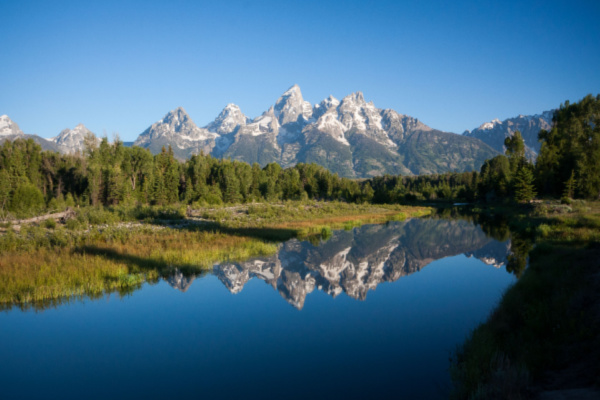After severe flooding closed Yellowstone National Park for the first time in history, visitors will have to wait a little longer to reenter as upcoming storms could aggravate existing flood conditions.
According to AccuWeather, the timing of the reopening of Yellowstone National Park remained unknown Wednesday as cleanup continues and the threat of additional storms looms over the weekend. On Monday, park officials had originally estimated that it would reopen on Wednesday, June 15, but that date was later shifted to June 19.
The National Park Service (NPS) announced Tuesday evening that all five of the entrances of Yellowstone would remain temporarily closed while floodwaters continued to recede slowly, so the park can conduct evaluations on the “substantially damaged” infrastructure from roads to wastewater treatment facilities.
The area had received four times the normal amount of rainfall since the beginning of June, with about one month’s worth of rain falling on Sunday alone, AccuWeather Meteorologist John Feerick told AccuWeather National Reporter Bill Wadell.
By Monday, the combination of rainfall and snowmelt contributed to severe flooding and landslides particularly in the northern end of the national landmark, forcing some 10,000 people to evacuate. As of Wednesday, the Montana National Guard continued to assist with search and rescue operations, having rescued at least 87 people since the flood event began.
After a mostly dry Saturday, a southerly low could deliver moisture to the area by Sunday, increasing the chance of showers and thunderstorms in and around Yellowstone, according to AccuWeather Meteorologist Brian Thompson.
“While widespread heavy rain is not expected, any of these thunderstorms will have the potential to produce locally heavy rain, which could aggravate any existing flooding conditions,” Thompson said. “The good news is that it looks mostly dry into the early and middle parts of next week, which should allow some of the swollen rivers to gradually recede following any weekend rain.”
When the park does reopen, however, visitors should plan ahead and prepare for a change in how the park admits visitors. With the northern loop of the park expected to be unavailable to visitors for the rest of the season and tourists beginning to prepare for summer visits during Yellowstone’s 150th anniversary, the NPS said that the park will likely implement a temporary reservation system to prevent gridlock and reduce impacts on the remaining park infrastructure.
“It just came pretty quick and out of nowhere,” Brendan Phillips, a stranded backpacker from St. Louis, told Wadell in an interview on Tuesday. “It seems like the locals weren’t really ready for it either. I think if everyone knew it was coming this town would be almost empty. It came pretty quick so that’s why so many people are stranded here.”
Floodwaters from the river at Corwin Springs crested at 13.88 feet, surpassing the old record of 11.5 feet set in 1918, according to the National Weather Service.
There were no known injuries or fatalities in the park as a result of the flooding, according to the NPS. However, the “extremely hazardous conditions” forced 10,000 visitors to evacuate from the park and prompted the national landmark to close for the first time in history.
Due to the damage sustained by the flooding and rockslides, the repair time will likely last through the season. As of Tuesday evening, crews continued to assist at least five groups of campers in the northern range and assess damage to backcountry campsites, trails and bridges, according to the NPS.
—
Photo Credit: Busara / Shutterstock.com
